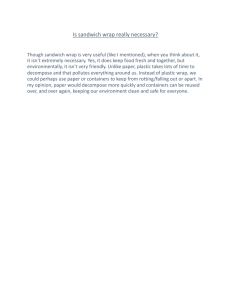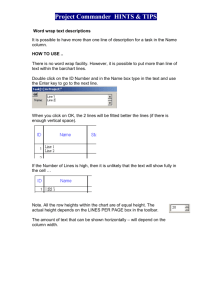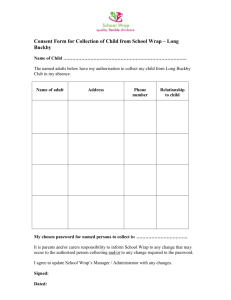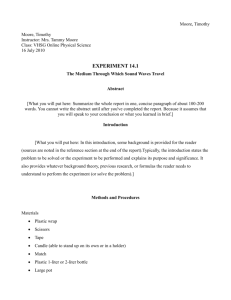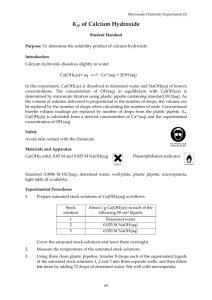Eight Solution Problem Lab: Chemistry Experiment
advertisement
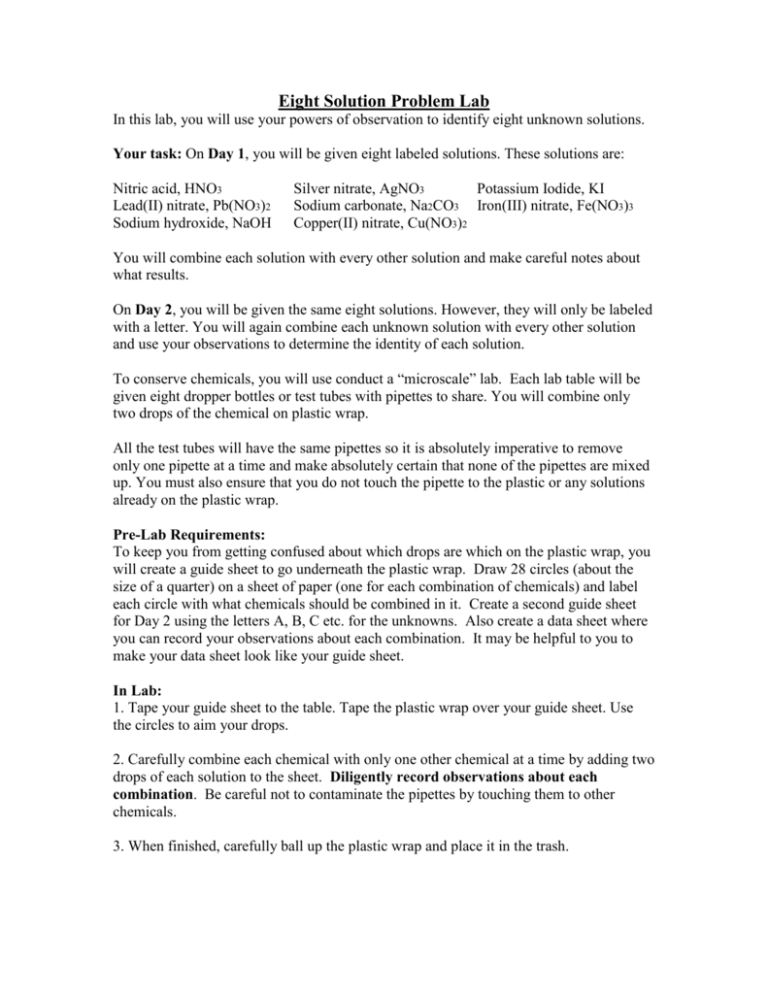
Eight Solution Problem Lab In this lab, you will use your powers of observation to identify eight unknown solutions. Your task: On Day 1, you will be given eight labeled solutions. These solutions are: Nitric acid, HNO3 Lead(II) nitrate, Pb(NO3)2 Sodium hydroxide, NaOH Silver nitrate, AgNO3 Potassium Iodide, KI Sodium carbonate, Na2CO3 Iron(III) nitrate, Fe(NO3)3 Copper(II) nitrate, Cu(NO3)2 You will combine each solution with every other solution and make careful notes about what results. On Day 2, you will be given the same eight solutions. However, they will only be labeled with a letter. You will again combine each unknown solution with every other solution and use your observations to determine the identity of each solution. To conserve chemicals, you will use conduct a “microscale” lab. Each lab table will be given eight dropper bottles or test tubes with pipettes to share. You will combine only two drops of the chemical on plastic wrap. All the test tubes will have the same pipettes so it is absolutely imperative to remove only one pipette at a time and make absolutely certain that none of the pipettes are mixed up. You must also ensure that you do not touch the pipette to the plastic or any solutions already on the plastic wrap. Pre-Lab Requirements: To keep you from getting confused about which drops are which on the plastic wrap, you will create a guide sheet to go underneath the plastic wrap. Draw 28 circles (about the size of a quarter) on a sheet of paper (one for each combination of chemicals) and label each circle with what chemicals should be combined in it. Create a second guide sheet for Day 2 using the letters A, B, C etc. for the unknowns. Also create a data sheet where you can record your observations about each combination. It may be helpful to you to make your data sheet look like your guide sheet. In Lab: 1. Tape your guide sheet to the table. Tape the plastic wrap over your guide sheet. Use the circles to aim your drops. 2. Carefully combine each chemical with only one other chemical at a time by adding two drops of each solution to the sheet. Diligently record observations about each combination. Be careful not to contaminate the pipettes by touching them to other chemicals. 3. When finished, carefully ball up the plastic wrap and place it in the trash. Lab Report: Include the following things in addition to all required elements on the Lab Report Instruction Sheet: A) Purpose B) Analysis questions: 1) What is the identity of each unknown solution (i.e. Unknown A is ____, B is _____, etc.)? 2) Describe in detail the process you used to identify the unknown solutions. It may be helpful to use the first unknowns you figured out to illustrate this process. You should have information about how you figured out each of the eight unknowns or you will lose significant points. 3) What effect would poor observation skills during the lab have on your analysis? 4) How might these observation techniques be used in the real world? Be creative. There should never be unlabeled bottles of solutions in real labs, so this should not be your answer. C) Conclusions D) Original Data Sheet (points will be deducted from your lab if this is not included)
